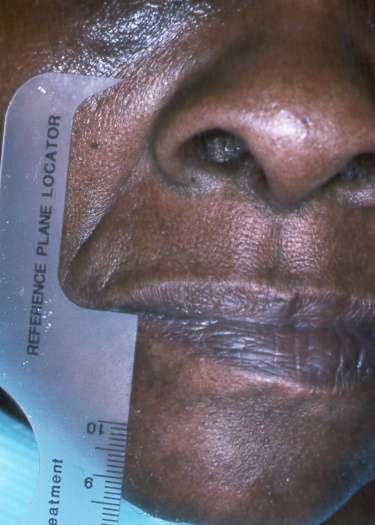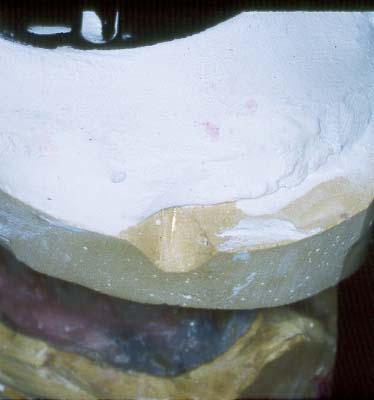
The facebow record is about a 15 minute procedure designed to mount your maxillary cast on the articulator. If you are not prepared it will take more than an hour.
The facebow will position the maxillary cast (only the maxillary cast) on the articulator in the same relationship as the maxilla exists in the patient. We record (1) the maxilla's position anterior to the condyle (for the Slidematic we use the external auditory meatus) and (2) the maxilla's position to a horizontal plane. (Now you know why we have a third point of reference. You need three points to make a plane. What are the other two points?)
The importance of the correct positioning of the maxillary cast becomes apparent when you consider the mandibular cast is eventually related to the maxillary cast.
The static maxillo-mandibular relationship (centric relation) is one future goal. Another goal is to have the opening and closing arcs of the models mimic the opening and closing arcs of the patient's jaws.
If the mandible moved as an elevator, then the facebow would be unimportant. As the mouth opened, the relative position of the maxilla and mandible would not change. The centric relation would not change.
We know the mandible moves in an arc posteriorly when opening. Thus every change in vertical causes a change in the relative position of the mandible to the maxilla (centric relation). Presumably, we would have to take a new centric record with every change in vertical.
If we can get the mandibular model to follow the same arc as the patient's mandible, we will be in the correct centric relation with each jaw movement. We need the facebow for this to happen.
In complete dentures, with flat-planed teeth, the facebow is more of a convenience than a necessity. With crown and bridge construction, if you want the cusps to follow the opposing grooves, then you need the facebow.
There is an informative booklet given with your facebow. It gives a step by step explanation of how the procedure should be followed.
The most common facebow record mistakes are:
Not having the incisal guide pin on zero with the screwdriver side down on the metal incisal guide table.
Not having the metal incisal guide table on the articulator.
Not remembering to locate the third point of reference.
 |
13. 3rd Point of Reference |
Not having all the screws.
Not putting the screws in correctly. The number #2 screw should have the head closest to the floor. When you tighten the screw it should be moving up. If you put the screw in from the other direction, it will not hold the fork in place.
Not knowing to loosen up the screws for #1 and #2 before taking the record.
Not having a solid relationship between the recording base and the fork.
I wrap a whole sheet of base plate wax around the fork. Then I soften the wax on the fork and press the occlusion rim into the softened wax. Add sticky wax to both waxes. When you remove the fork from the recording base, pry the two waxes apart with a knife. If you try to pull the fork straight off, the occlusion rim will come with it.
Not having the fork come out the right side of the mouth.
Not making sure that the recording base is firmly seated in the mouth during the entire record.
Not putting four notches on the maxillary cast. (Do not make any additional grooves on the model. It will make it more difficult to reseat the model.)

|
13. Notches You must fill the notches with plaster. Otherwise, you do not have any use for that notch. |
Not lubricating the cast before mounting.
Not having the plaster soft enough when closing the articulator, so the pin never reaches the incisal guide table. Support the fork and model when closing the articulator so the position of the model doesn't change from the force of closure.
(The requirements will change somewhat with a different facebow.)
(If you are going to do a facebow for an immediate denture, the patient may have some anterior teeth in place. Make sure that the occlusion rim is at least as long as the anterior teeth so that the fork handle will not be deflected by the anterior teeth.)
| Previous page | Next page |
©1999 by Julius Rosen, D.D.S.